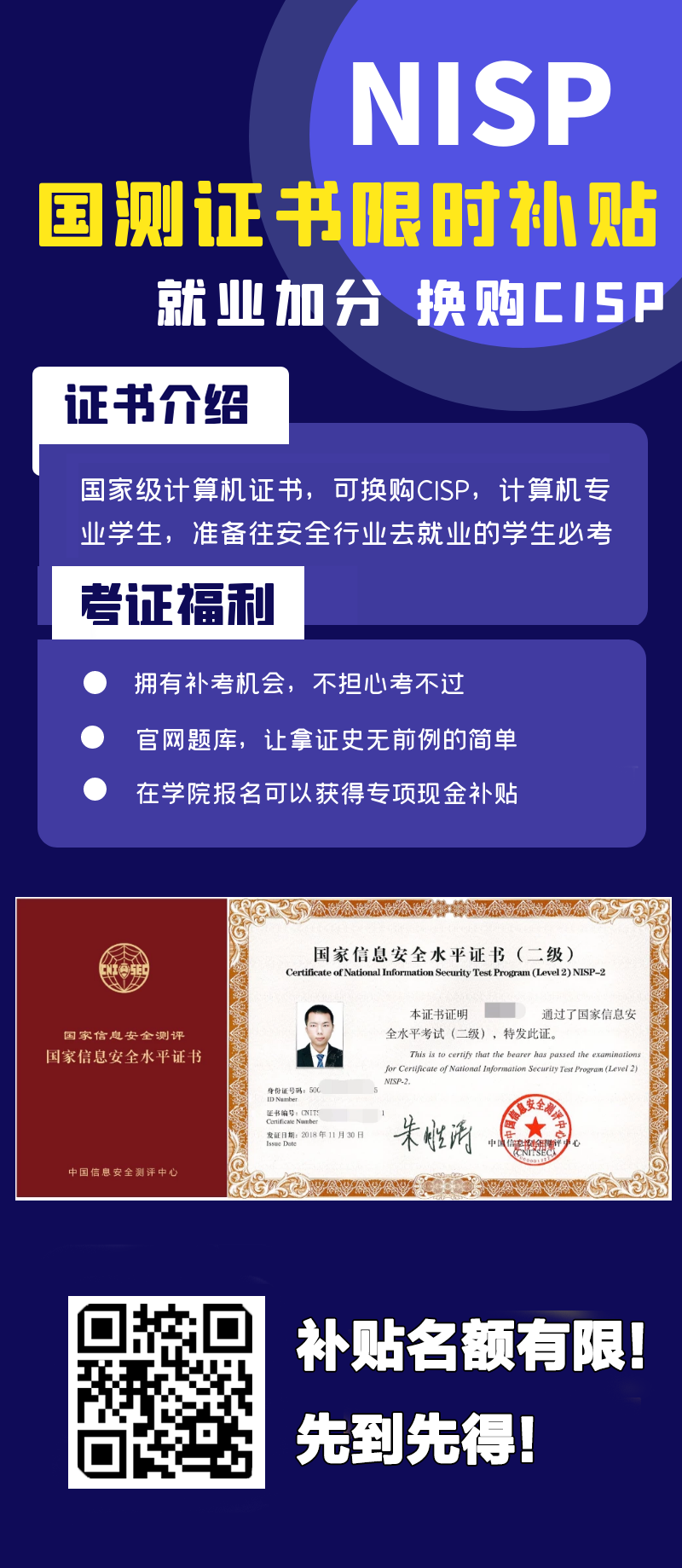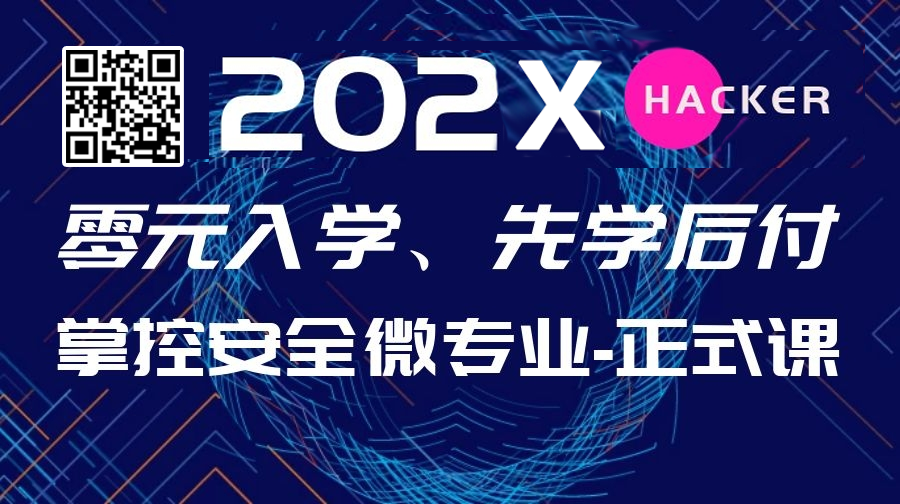PHA+PHN0cm9uZyBzdHlsZT0iY29sb3I6IHJnYigwLCAxNzYsIDgwKTsiPjxici8+PC9zdHJvbmc+PC9wPjxwPjxzdHJvbmcgc3R5bGU9ImNvbG9yOiByZ2IoMCwgMTc2LCA4MCk7Ij7lpKflrrblpb3vvIzku4rlpKnliIbkuqvnmoR3cml0ZXVw5piv5YWz5LqOWW91VHViZemAmuefpeacjeWKoe+8iE5vdGlmaWNhdGlvbu+8ieeahENTUkbmvI/mtJ7vvIzkvZzogIXliKnnlKjor6XmvI/mtJ7lj6/ku6XliqvmjIHlhbbku5ZZb3VUdWJl55So5oi377yI5Y+X5a6z6ICF77yJ55qE6YCa55+l5pyN5Yqh77yM6IO95Lul5Y+X5a6z6ICF55So5oi36Lqr5Lu95o6l5pS25Yiw5YW26K6i6ZiF6aKR6YGT5oiW6KeG6aKR55qE5pyA5paw6YCa55+l77yM5ryP5rSe5pyA57uI6I635b6XR29vZ2xl5a6Y5pa5JDMxMzMuN+e+jumHkeeahOWlluWKse+8jOS7peS4i+aYr+S9nOiAheeahOWIhuS6q+OAgjwvc3Ryb25nPjwvcD48cD48c3Ryb25nIHN0eWxlPSJjb2xvcjogcmdiKDAsIDE3NiwgODApOyI+PGJyLz48L3N0cm9uZz48L3A+PGgyPuS7jlBPU1Tor7fmsYLkuK3lj5HnjrDnq6/lgKo8L2gyPjxkaXY+PHA+PGJyLz48L3A+PC9kaXY+PHA+5p+Q5aSp5pma5LiK77yM5oiR5ZyoWW91VHViZeWumOe9keS4iua1i+ivlea8j+a0nu+8jOeci+eci+iDveacieS7gOS5iOWPkeeOsO+8jOS4jeefpeS4jeinieaXtumXtOW3sue7j+aYr+WNiuWknDAwOjMw5LqG77yM5Zuw57Sv5LmL5p6B4oCmLi7jgILmiJHlsLHpmo/kvr/ngrnngrnmiZPlvIDkuoZZb3VUdWJl55qE6YCa55+l5pyN5Yqh77yITm90aWZpY2F0aW9u77yJ77yM5YW25Lit55qEUE9TVOivt+axguW8lei1t+S6huaIkeeahOazqOaEj++8mjwvcD48cD48YnIvPjwvcD48cHJlPlBPU1QmbmJzcDsvbm90aWZpY2F0aW9uc19hamF4P2FjdGlvbl9yZWdpc3Rlcl9kZXZpY2U9MSZuYnNwO0hUVFAvMS4xCkhvc3Q6Jm5ic3A7d3d3LnlvdXR1YmUuY29tClVzZXItQWdlbnQ6Jm5ic3A7TW96aWxsYS81LjAmbmJzcDsoV2luZG93cyZuYnNwO05UJm5ic3A7MTAuMDsmbmJzcDtXaW42NDsmbmJzcDt4NjQ7Jm5ic3A7cnY6NjUuMCkmbmJzcDtHZWNrby8yMDEwMDEwMSZuYnNwO0ZpcmVmb3gvNjUuMApBY2NlcHQ6Jm5ic3A7Ki8qQWNjZXB0LUxhbmd1YWdlOiZuYnNwO2VuLVVTLGVuO3E9MC41CkFjY2VwdC1FbmNvZGluZzombmJzcDtnemlwLCZuYnNwO2RlZmxhdGUKUmVmZXJlcjombmJzcDtodHRwczovL3d3dy55b3V0dWJlLmNvbS9zdy5qcwpDb250ZW50LVR5cGU6Jm5ic3A7bXVsdGlwYXJ0L2Zvcm0tZGF0YTsmbmJzcDtib3VuZGFyeT0tLS0tLS0tLS0tLS0tLS0tLS0tLS0tLS0tLS00MTE4NDY3NjMzNApPcmlnaW46Jm5ic3A7aHR0cHM6Ly93d3cueW91dHViZS5jb20KQ29udGVudC1MZW5ndGg6Jm5ic3A7MTQ1OQpDb25uZWN0aW9uOiZuYnNwO2Nsb3NlCkNvb2tpZTombmJzcDtkdWgsJm5ic3A7Y29va2llcyEKLS0tLS0tLS0tLS0tLS0tLS0tLS0tLS0tLS0tLS00MTE4NDY3NjMzNApDb250ZW50LURpc3Bvc2l0aW9uOiZuYnNwO2Zvcm0tZGF0YTsmbmJzcDtuYW1lPSJlbmRwb2ludCIKCmh0dHBzOi8vdXBkYXRlcy5wdXNoLnNlcnZpY2VzLm1vemlsbGEuY29tL3dwdXNoL3YxL2dBQUEuLi4KCi0tLS0tLS0tLS0tLS0tLS0tLS0tLS0tLS0tLS0tNDExODQ2NzYzMzQKQ29udGVudC1EaXNwb3NpdGlvbjombmJzcDtmb3JtLWRhdGE7Jm5ic3A7bmFtZT0iZGV2aWNlX2lkIgpkYmU4NDUzZDk5NzE0YzYxNjA5OTRmZGY1YmIzYzU5MzMyZGYwNDI3OGEuLi4KLS0tLS0tLS0tLS0tLS0tLS0tLS0tLS0tLS0tLS00MTE4NDY3NjMzNApDb250ZW50LURpc3Bvc2l0aW9uOiZuYnNwO2Zvcm0tZGF0YTsmbmJzcDtuYW1lPSJwMjU2ZGhfa2V5IgpCQk5Wa1ZPdDZ0cFkxS3ZKSnF0THZxdC4uLgotLS0tLS0tLS0tLS0tLS0tLS0tLS0tLS0tLS0tLTQxMTg0Njc2MzM0CkNvbnRlbnQtRGlzcG9zaXRpb246Jm5ic3A7Zm9ybS1kYXRhOyZuYnNwO25hbWU9ImF1dGhfa2V5IgpWNS1fbGg2bllUMnpvWS4uLgotLS0tLS0tLS0tLS0tLS0tLS0tLS0tLS0tLS0tLTQxMTg0Njc2MzM0CkNvbnRlbnQtRGlzcG9zaXRpb246Jm5ic3A7Zm9ybS1kYXRhOyZuYnNwO25hbWU9InBlcm1pc3Npb24iCmdyYW50ZWQKLS0tLS0tLS0tLS0tLS0tLS0tLS0tLS0tLS0tLS00MTE4NDY3NjMzNC0tPC9wcmU+PHA+PGJyLz48L3A+PHA+5LmN5LiA55yL77yM5Li65LqG6Ziy5q2iQ1NSRu+8jOWFtuS4reeahGF1dGhfa2V544CBcDI1NmRoX2tleeOAgWVuZHBvaW5044CBZGV2aWNlX2lk562J5Y+C5pWw6LKM5Ly86YO95piv57uP6L+H57yW56CB55qE5a2X56ym5Liy77yM5L2G5LuU57uG5LiA5YiG5p6Q5omN55+l6YGT77yM6L+Z5Lqb5omA5pyJ55qE5Y+C5pWw6YO95piv55Sx5YW25LitPHNwYW4gc3R5bGU9ImNvbG9yOiByZ2IoNTEsIDUxLCA1MSk7Ij48c3Ryb25nPnVwZGF0ZXMucHVzaC5zZXJ2aWNlcy5tb3ppbGxhLmNvbTwvc3Ryb25nPjwvc3Bhbj7nmoRNb3ppbGxh6YCa55+l5o6o6YCB5pyN5Yqh5Lqn55Sf55qE77yM5omA5Lul77yM6L+Z5qC35Yid55Wl5p2l55yL77yM6K+l5o6l5Y+j5LiK5LiN5a2Y5ZyoQ1NSRua8j+a0nuOAgjwvcD48aDI+PGJyLz48L2gyPjxoMj7liIbmnpA8c3BhbiBzdHlsZT0iY29sb3I6IHJnYig1MSwgNTEsIDUxKTsiPlNlcnZpY2UgV29ya2VyPC9zcGFuPiDmnI3liqHlt6XkvZznur/nqIs8L2gyPjxkaXY+PHA+PGJyLz48L3A+PC9kaXY+PHA+5rex5YWl5YiG5p6Q5Y+v55+l77yM5LiK6L+wUE9TVOivt+axguS4reeahHJlZmVycmVy5a2X5q615YC85Li64oCcPHN0cm9uZz48YSBocmVmPSJodHRwczovL3d3dy55b3V0dWJlLmNvbS9zdy5qcyI+aHR0cHM6Ly93d3cueW91dHViZS5jb20vc3cuanM8L2E+PC9zdHJvbmc+4oCd77yM6L+Z5Liqc3cuanPmmI7mmL7kuLrkuIDkuKrmnI3liqHlt6XkvZznur/nqIvohJrmnKzvvIhTZXJ2aWNlIFdvcmtlcu+8ieOAgjwvcD48cD5TZXJ2aWNlIFdvcmtlciDmmK/ni6znq4vkuo7lvZPliY3pobXpnaLnmoTkuIDmrrXov5DooYzlnKjmtY/op4jlmajlkI7lj7Dov5vnqIvph4znmoTohJrmnKzjgIJTZXJ2aWNlIFdvcmtlcuS4jemcgOimgeeUqOaIt+aJk+W8gCB3ZWIgCumhtemdou+8jOS5n+S4jemcgOimgeWFtuS7luS6pOS6ku+8jOW8guatpeWcsOi/kOihjOWcqOS4gOS4quWujOWFqOeLrOeri+eahOS4iuS4i+aWh+eOr+Wig++8jOS4jeS8muWvueS4u+e6v+eoi+mAoOaIkOmYu+WhnuOAguWfuuS6jlNlcnZpY2UgCldvcmtlcuWPr+S7peWunueOsOa2iOaBr+aOqOmAgeOAgeemu+e6v+e8k+WtmOWSjOWQjuWPsOWQjOatpUFQSeetieWKn+iDve+8jOacrOi0qOS4iuadpeivtO+8jFNlcnZpY2UgV29ya2Vy5YWF5b2T5LqGV2Vi5bqU55So56iL5bqP5LiO5rWP6KeI5Zmo5LmL6Ze055qE5Luj55CG44CCPC9wPjxwPuS5n+WwseaYr+ivtO+8jHJlZmVycmVy5a2X5q615Lit55qEc3cuanPlj5Hotbfkuobov5nkuKpQT1NU6K+35rGC77yM5Lul6Iez5LqO6L+Z5Liq6K+35rGC5ZKM5YW25a6D5YW35aSHQ1NSRumYsuW+oeacuuWItueahFlvdVR1YmXor7fmsYLlhoXlrrnlrZjlnKjkuI3lkIzjgII8L3A+PGgyPjxici8+PC9oMj48aDI+5p6E6YCgQ1NSRuaUu+WHu+ahhuaetjwvaDI+PGRpdj48cD48YnIvPjwvcD48L2Rpdj48cD7liLDkuobov5nkuIDmraXvvIzku47ov5nkupvlj4LmlbDph4zvvIzmiJHpmpDnuqbop4nlvpfov5nph4zlupTor6XkvJrmnInmvI/mtJ7lh7rnjrDvvIzkvYbmgLvopoHmnoTpgKDkuKpQb0Plh7rmnaXor5Xor5XnnIvjgILlm6DmraTvvIzpgJrov4fnoJTnqbbku6XkuIrlj4LmlbDnmoTnlJ/miJDmnLrliLbvvIzmiJHliKnnlKhzdy5qc+WOn+eQhu+8jOe8luWGmeS6huS7peS4i+S4ieS4quS7o+eggeaWh+S7tu+8jOaehOW7uuS6huS4gOS4quacrOWcsOacjeWKoeerr+adpeeUn+aIkOWFtuS4reeahOWQhOS4quWPguaVsOOAgjwvcD48cD5pbmRleC5odG1s77yaPC9wPjxwcmU+PCFET0NUWVBFJm5ic3A7aHRtbD4KPGh0bWw+CjxoZWFkPgombmJzcDsmbmJzcDsmbmJzcDsmbmJzcDs8bWV0YSZuYnNwO2NoYXJzZXQ9InV0Zi04IiZuYnNwOy8+CiZuYnNwOyZuYnNwOyZuYnNwOyZuYnNwOzxtZXRhJm5ic3A7aHR0cC1lcXVpdj0iWC1VQS1Db21wYXRpYmxlIiZuYnNwO2NvbnRlbnQ9IklFPWVkZ2UiPgombmJzcDsmbmJzcDsmbmJzcDsmbmJzcDs8dGl0bGU+UHVzaCZuYnNwO0RlbW88L3RpdGxlPgombmJzcDsmbmJzcDsmbmJzcDsmbmJzcDs8bWV0YSZuYnNwO25hbWU9InZpZXdwb3J0IiZuYnNwO2NvbnRlbnQ9IndpZHRoPWRldmljZS13aWR0aCwmbmJzcDtpbml0aWFsLXNjYWxlPTEiPgombmJzcDsmbmJzcDsmbmJzcDsmbmJzcDs8bGluayZuYnNwO3JlbD0ic3R5bGVzaGVldCImbmJzcDt0eXBlPSJ0ZXh0L2NzcyImbmJzcDttZWRpYT0ic2NyZWVuIiZuYnNwO2hyZWY9ImluZGV4LmNzcyImbmJzcDsvPgombmJzcDsmbmJzcDsmbmJzcDsmbmJzcDs8c2NyaXB0Jm5ic3A7c3JjPSJpbmRleC5qcyI+PC9zY3JpcHQ+CjwvaGVhZD4KPGJvZHk+CiZuYnNwOyZuYnNwOyZuYnNwOyZuYnNwOzxoMT5IZWxsbyZuYnNwO1dvcmxkPC9oMT4KJm5ic3A7Jm5ic3A7Jm5ic3A7Jm5ic3A7PGJ1dHRvbiZuYnNwO2lkPSJwZXJtaXNzaW9uLWJ0biImbmJzcDtvbmNsaWNrPSJtYWluKCkiPkFzayZuYnNwO1Blcm1pc3Npb248L2J1dHRvbj4KPC9ib2R5Pgo8L2h0bWw+CgppbmRleC5qc++8mmNvbnN0Jm5ic3A7Y2hlY2smbmJzcDs9Jm5ic3A7KCkmbmJzcDs9PiZuYnNwO3sKJm5ic3A7Jm5ic3A7aWYmbmJzcDsoISgmIzM5O3NlcnZpY2VXb3JrZXImIzM5OyZuYnNwO2luJm5ic3A7bmF2aWdhdG9yKSkmbmJzcDt7CiZuYnNwOyZuYnNwOyZuYnNwOyZuYnNwO3Rocm93Jm5ic3A7bmV3Jm5ic3A7RXJyb3IoJiMzOTtObyZuYnNwO1NlcnZpY2UmbmJzcDtXb3JrZXImbmJzcDtzdXBwb3J0ISYjMzk7KQombmJzcDsmbmJzcDt9CiZuYnNwOyZuYnNwO2lmJm5ic3A7KCEoJiMzOTtQdXNoTWFuYWdlciYjMzk7Jm5ic3A7aW4mbmJzcDt3aW5kb3cpKSZuYnNwO3sKJm5ic3A7Jm5ic3A7Jm5ic3A7Jm5ic3A7dGhyb3cmbmJzcDtuZXcmbmJzcDtFcnJvcigmIzM5O05vJm5ic3A7UHVzaCZuYnNwO0FQSSZuYnNwO1N1cHBvcnQhJiMzOTspCiZuYnNwOyZuYnNwO30KfWNvbnN0Jm5ic3A7cmVnaXN0ZXJTZXJ2aWNlV29ya2VyJm5ic3A7PSZuYnNwO2FzeW5jJm5ic3A7KCkmbmJzcDs9PiZuYnNwO3sKJm5ic3A7Jm5ic3A7Y29uc3QmbmJzcDtzd1JlZ2lzdHJhdGlvbiZuYnNwOz0mbmJzcDthd2FpdCZuYnNwO25hdmlnYXRvci5zZXJ2aWNlV29ya2VyLnJlZ2lzdGVyKCYjMzk7c3cuanMmIzM5OykKJm5ic3A7Jm5ic3A7cmV0dXJuJm5ic3A7c3dSZWdpc3RyYXRpb24KfWNvbnN0Jm5ic3A7cmVxdWVzdE5vdGlmaWNhdGlvblBlcm1pc3Npb24mbmJzcDs9Jm5ic3A7YXN5bmMmbmJzcDsoKSZuYnNwOz0+Jm5ic3A7ewombmJzcDsmbmJzcDtjb25zdCZuYnNwO3Blcm1pc3Npb24mbmJzcDs9Jm5ic3A7YXdhaXQmbmJzcDt3aW5kb3cuTm90aWZpY2F0aW9uLnJlcXVlc3RQZXJtaXNzaW9uKCkKJm5ic3A7Jm5ic3A7aWYmbmJzcDsocGVybWlzc2lvbiZuYnNwOyE9PSZuYnNwOyYjMzk7Z3JhbnRlZCYjMzk7KSZuYnNwO3sKJm5ic3A7Jm5ic3A7Jm5ic3A7Jm5ic3A7dGhyb3cmbmJzcDtuZXcmbmJzcDtFcnJvcigmIzM5O1Blcm1pc3Npb24mbmJzcDtub3QmbmJzcDtncmFudGVkJm5ic3A7Zm9yJm5ic3A7Tm90aWZpY2F0aW9uJiMzOTspCiZuYnNwOyZuYnNwO30KfWNvbnN0Jm5ic3A7bWFpbiZuYnNwOz0mbmJzcDthc3luYyZuYnNwOygpJm5ic3A7PT4mbmJzcDt7CiZuYnNwOyZuYnNwO2NoZWNrKCkKJm5ic3A7Jm5ic3A7Y29uc3QmbmJzcDtzd1JlZ2lzdHJhdGlvbiZuYnNwOz0mbmJzcDthd2FpdCZuYnNwO3JlZ2lzdGVyU2VydmljZVdvcmtlcigpCiZuYnNwOyZuYnNwO2NvbnN0Jm5ic3A7cGVybWlzc2lvbiZuYnNwOz0mbmJzcDthd2FpdCZuYnNwO3JlcXVlc3ROb3RpZmljYXRpb25QZXJtaXNzaW9uKCkKfTwvcHJlPjxwPnN3Lmpz77yaPC9wPjxwcmU+c2VsZi5hZGRFdmVudExpc3RlbmVyKCYjMzk7YWN0aXZhdGUmIzM5OywmbmJzcDthc3luYyZuYnNwOygpJm5ic3A7PT4mbmJzcDt7Jm5ic3A7Jm5ic3A7Jm5ic3A7Y29uc29sZS5sb2coIkhlbGxvIik7CiZuYnNwOyZuYnNwOyZuYnNwOyZuYnNwOyZuYnNwOyZuYnNwO3NlbGYucmVnaXN0cmF0aW9uLnB1c2hNYW5hZ2VyLnN1YnNjcmliZSgpCiZuYnNwOyZuYnNwOy50aGVuKGZ1bmN0aW9uKHN1YnNjcmlwdGlvbikmbmJzcDt7CiZuYnNwOyZuYnNwOyZuYnNwOyZuYnNwOyZuYnNwOyZuYnNwOyZuYnNwOyZuYnNwOyZuYnNwOyZuYnNwO2NvbnNvbGUubG9nKEpTT04uc3RyaW5naWZ5KHN1YnNjcmlwdGlvbikpOwombmJzcDsmbmJzcDt9KQombmJzcDsmbmJzcDsuY2F0Y2goZnVuY3Rpb24oZSkmbmJzcDt7CiZuYnNwOyZuYnNwOyZuYnNwOyZuYnNwO2NvbnNvbGUubG9nKGUpOwombmJzcDsmbmJzcDt9KTsKfSkKc2VsZi5hZGRFdmVudExpc3RlbmVyKCJwdXNoIiwmbmJzcDtmdW5jdGlvbihldmVudCkmbmJzcDt7CiZuYnNwOyZuYnNwO2lmJm5ic3A7KGV2ZW50LmRhdGEpJm5ic3A7ewombmJzcDsmbmJzcDsmbmJzcDsmbmJzcDtjb25zb2xlLmxvZygiUHVzaCZuYnNwO2V2ZW50ISEmbmJzcDsiLCZuYnNwO2V2ZW50LmRhdGEudGV4dCgpKTsKJm5ic3A7Jm5ic3A7Jm5ic3A7Jm5ic3A7c2hvd0xvY2FsTm90aWZpY2F0aW9uKCJZb2xvIiwmbmJzcDtldmVudC5kYXRhLnRleHQoKSwmbmJzcDsmbmJzcDtzZWxmLnJlZ2lzdHJhdGlvbik7CiZuYnNwOyZuYnNwO30mbmJzcDtlbHNlJm5ic3A7ewombmJzcDsmbmJzcDsmbmJzcDsmbmJzcDtjb25zb2xlLmxvZygiUHVzaCZuYnNwO2V2ZW50Jm5ic3A7YnV0Jm5ic3A7bm8mbmJzcDtkYXRhIik7CiZuYnNwOyZuYnNwO30KfSk7Y29uc3QmbmJzcDtzaG93TG9jYWxOb3RpZmljYXRpb24mbmJzcDs9Jm5ic3A7KHRpdGxlLCZuYnNwO2JvZHksJm5ic3A7c3dSZWdpc3RyYXRpb24pJm5ic3A7PT4mbmJzcDt7CiZuYnNwOyZuYnNwO2NvbnN0Jm5ic3A7b3B0aW9ucyZuYnNwOz0mbmJzcDt7CiZuYnNwOyZuYnNwOyZuYnNwOyZuYnNwO2JvZHkKJm5ic3A7Jm5ic3A7Jm5ic3A7Jm5ic3A7Ly8mbmJzcDtoZXJlJm5ic3A7eW91Jm5ic3A7Y2FuJm5ic3A7YWRkJm5ic3A7bW9yZSZuYnNwO3Byb3BlcnRpZXMmbmJzcDtsaWtlJm5ic3A7aWNvbiwmbmJzcDtpbWFnZSwmbmJzcDt2aWJyYXRlLCZuYnNwO2V0Yy4mbmJzcDsmbmJzcDt9OwombmJzcDsmbmJzcDtzd1JlZ2lzdHJhdGlvbi5zaG93Tm90aWZpY2F0aW9uKHRpdGxlLCZuYnNwO29wdGlvbnMpOwp9OzwvcHJlPjxwPjxici8+PC9wPjxwPui/meS4ieS4quS7o+eggeaWh+S7tueahOebrueahOWcqOS6juiOt+WPlnN3Lmpz6K+35rGC5pe255Sf5oiQ55qE5ZCE5Liq5Y+C5pWw77yM5pyJ5LqG6L+Z5Lqb5Y+C5pWw77yM5bCx5Y+v5Lul6Ze05o6l5b2i5oiQ6YCa55+l77yITm90aWZpY2F0aW9u77yJ77yM5omT5byA5YW25Lit55qEaW5kZXguaHRtbOmhtemdou+8jOeCueWHu0FzawogUGVybWlzc2lvbuaMiemSruivt+axgumAmuefpeadg+mZkO+8jOWQjuWPsOiwg+eUqHN3Lmpz6ISa5pys77yM6YCa6L+H5YaF572u55qERmlyZWZveCAKQVBJ5b2i5oiQ5LiA5Liq5pys5Zyw55qE6YCa55+l5pyN5Yqh56uv77yM6YCa55+l6K+35rGC5o+Q5Lqk5pe277yM5oiR5Lus5bCx6IO96I635Y+W5Yiw5YW25Lit55qE5ZCE5Liq5Y+C5pWw44CC5Yip55So6L+Z5Lqb5Y+C5pWw77yM5Y+v5Lul6L+b5LiA5q2l5p6E6YCg5Ye6Q1NSRuaUu+WHu+ahhuaetu+8jOWwseiDveiOt+WPluWIsOWvueW6lOeahOmAmuefpea2iOaBr+OAgjwvcD48cD48YnIvPjwvcD48cD7lnKjmnKzlnLBsb2NsYWxob3N05p6E6YCg6L+Z56eN6YCa55+l6K+35rGC5pyN5Yqh56uv77yM6ZyA6KaB55So5YiwU2VydmljZSBXb3JrZXIg5pyN5Yqh5bel5L2c57q/56iL77yIc3cuanPvvInnmoTpg6jnvbLljp/nkIbvvIzlhbbkuK3mtonlj4rmnI3liqHms6jlhozjgIHmv4DmtLvjgIHnvJPlrZjmjqfliLblkoznm7jlhbPlk43lupTmnLrliLbvvIzlhbfkvZPlj6/lj4LogIPvvJo8YSBocmVmPSJodHRwczovL2RldmVsb3Blci5tb3ppbGxhLm9yZy96aC1DTi9kb2NzL1dlYi9BUEkvU2VydmljZV9Xb3JrZXJfQVBJL1VzaW5nX1NlcnZpY2VfV29ya2VycyI+ZGV2ZWxvcGVyLm1vemlsbGEub3JnPC9hPjxzcGFuIHN0eWxlPSJjb2xvcjogcmdiKDUxLCA1MSwgNTEpOyI+PC9zcGFuPuWSjDxhIGhyZWY9Imh0dHBzOi8vZGV2ZWxvcGVycy5nb29nbGUuY29tL3dlYi9mdW5kYW1lbnRhbHMvY29kZWxhYnMvb2ZmbGluZS8/aGw9emgtY24iPmRldmVsb3BlcnMuZ29vZ2xlLmNvbTwvYT48c3BhbiBzdHlsZT0iY29sb3I6IHJnYig1MSwgNTEsIDUxKTsiPjwvc3Bhbj7kuK3nmoTor6bnu4bku4vnu43or7TmmI7jgII8L3A+PHA+PGJyLz48L3A+PHA+PGEgaHJlZj0iaHR0cHM6Ly9pbWFnZS4zMDAxLm5ldC9pbWFnZXMvMjAxOTA0MTEvMTU1NDk3MzQzNV81Y2FmMDJmYjI2MjA1LnBuZyIgY2xhc3M9ImhpZ2hzbGlkZS1pbWFnZSIgdGFyZ2V0PSJfYmxhbmsiPjxpbWcgYWx0PSJsb2NhbGhvc3QucG5nIiBzcmM9Imh0dHBzOi8vaW1hZ2UuMzAwMS5uZXQvaW1hZ2VzLzIwMTkwNDExLzE1NTQ5NzM0MzVfNWNhZjAyZmIyNjIwNS5wbmchc21hbGwiIHN0eWxlPSJkaXNwbGF5OiBibG9jazsiIHdpZHRoPSI2OTAiLz48L2E+PC9wPjxwPue7vOWQiOS4iui/sOWIhuaekO+8jOWfuuS6juaIkeS7rOS5i+WJjeWIm+W7uueahOacrOWcsOmAmuefpeacjeWKoeerr++8jOe7k+WQiFlvdXR1YmXnmoTpgJrnn6Xor7fmsYLmj5DkuqTmlrnlvI/vvIzmiJHmnoTpgKDkuobku6XkuItDU1JG5pS75Ye75qGG5p6277yaPC9wPjxwPjxici8+PC9wPjxwcmU+PGZvcm0mbmJzcDthY3Rpb249Imh0dHBzOi8vd3d3LnlvdXR1YmUuY29tL25vdGlmaWNhdGlvbnNfYWpheD9hY3Rpb25fcmVnaXN0ZXJfZGV2aWNlPTEiJm5ic3A7bWV0aG9kPSJwb3N0IiZuYnNwO2VuY3R5cGU9Im11bHRpcGFydC9mb3JtLWRhdGEiJm5ic3A7bmFtZT0iY3NyZiI+Jm5ic3A7Jm5ic3A7Jm5ic3A7Jm5ic3A7Jm5ic3A7Jm5ic3A7Jm5ic3A7Jm5ic3A7PGlucHV0Jm5ic3A7dHlwZT0idGV4dCImbmJzcDtuYW1lPSJkZXZpY2VfaWQiJm5ic3A7dmFsdWU9InJlcGxhY2UiPiZuYnNwOyZuYnNwOyZuYnNwOyZuYnNwOyZuYnNwOyZuYnNwOyZuYnNwOyZuYnNwOzxpbnB1dCZuYnNwO3R5cGU9InRleHQiJm5ic3A7bmFtZT0icGVybWlzc2lvbiImbmJzcDt2YWx1ZT0iZ3JhbnRlZCI+Jm5ic3A7Jm5ic3A7Jm5ic3A7Jm5ic3A7Jm5ic3A7Jm5ic3A7Jm5ic3A7Jm5ic3A7Jm5ic3A7Jm5ic3A7Jm5ic3A7Jm5ic3A7Jm5ic3A7Jm5ic3A7Jm5ic3A7Jm5ic3A7PGlucHV0Jm5ic3A7dHlwZT0idGV4dCImbmJzcDtuYW1lPSJlbmRwb2ludCImbmJzcDt2YWx1ZT0icmVwbGFjZSI+Jm5ic3A7Jm5ic3A7Jm5ic3A7Jm5ic3A7Jm5ic3A7Jm5ic3A7Jm5ic3A7Jm5ic3A7Jm5ic3A7Jm5ic3A7Jm5ic3A7Jm5ic3A7Jm5ic3A7Jm5ic3A7Jm5ic3A7Jm5ic3A7PGlucHV0Jm5ic3A7dHlwZT0idGV4dCImbmJzcDtuYW1lPSJwMjU2ZGhfa2V5IiZuYnNwO3ZhbHVlPSJyZXBsYWNlPSI+Jm5ic3A7Jm5ic3A7Jm5ic3A7Jm5ic3A7Jm5ic3A7Jm5ic3A7Jm5ic3A7Jm5ic3A7Jm5ic3A7Jm5ic3A7Jm5ic3A7Jm5ic3A7Jm5ic3A7Jm5ic3A7Jm5ic3A7Jm5ic3A7PGlucHV0Jm5ic3A7dHlwZT0idGV4dCImbmJzcDtuYW1lPSJhdXRoX2tleSImbmJzcDt2YWx1ZT0icmVwbGFjZSI+Jm5ic3A7Jm5ic3A7Jm5ic3A7Jm5ic3A7Jm5ic3A7Jm5ic3A7Jm5ic3A7Jm5ic3A7PGlucHV0Jm5ic3A7dHlwZT0ic3VibWl0Ij4mbmJzcDsmbmJzcDsmbmJzcDsmbmJzcDsmbmJzcDsmbmJzcDsmbmJzcDsmbmJzcDs8c2NyaXB0Jm5ic3A7dHlwZT0idGV4dC9qYXZhc2NyaXB0Ij5kb2N1bWVudC5jc3JmLnN1Ym1pdCgpOzwvc2NyaXB0PjwvZm9ybT48L2h0bWw+PC9wcmU+PHA+PGJyLz48L3A+PHA+6K6p5oiR5oSP5oOz5LiN5Yiw55qE5piv77yM5oiR5Zyo5YW25Lit5Lul5YW25LuWWW91dHViZei0puWPt+i6q+S7ve+8jOWIqeeUqOiOt+WPluWIsOeahOWQhOenjeivt+axguWPguaVsO+8jOaPkOS6pOS6humAmuefpeivt+axgu+8jOern+eEtuiDveacieaViOWunuaWvemAmuefpea2iOaBr+eahENTUkbmlLvlh7vjgILkuZ/lsLHmmK/or7TvvIzmiJHku6znjrDlnKjlj6/ku6XliqvmjIHliLDlhbbku5ZZb3V0dWJl6LSm5Y+355qE5raI5oGv5o6o6YCB5o6l5Y+j77yIUFVTSAogCndlYmhvb2vvvInvvIzku6Xlhbbku5ZZb3V0dWJl6LSm5Y+36Lqr5Lu95pS25Y+W5YiwWW91dHViZeWTjeW6lOivpei0puWPt+eahOebuOWFs+mAmuefpe+8jOi/meS6m+mAmuefpeWPr+iDveaYr+S7luiuoumYheeahOafkOS4qumikemBk+aIluinhumikeeahOabtOaWsOa2iOaBr++8jOS5n+WPr+iDveaYr+S7luengeS6uuinhumikeeahOinguS8l+ivhOiuuuetie+8jOWmguS4i++8mjwvcD48cD48YnIvPjwvcD48cD48aW1nIHNyYz0iaHR0cHM6Ly9iYnMuemthcS5jbi91cGxvYWQvdXNlcmZpbGUvMTkzMi83MzQ1ZjYzYjI3NDQ3MDA5MjhiNzMyYzY5ZjExMmM3My5wbmciLz48L3A+PHA+PGJyLz48L3A+PHA+5ryP5rSe5LiK5oql5ZCO77yM6LC35q2M5Zyo5Y2K5bCP5pe25LmL5ZCO5bCx57uZ5LqG5oiR5Zue5aSN77yM56ew5ryP5rSe5pyJ5pWI77yM5Lya5bC95b+r6LWw5a6M6aqM6K+B5L+u5aSN5rWB56iL77yM5bm25Lya5Y+K5pe257uZ5oiR5ZCO57ut6YCa55+l44CC5Y2K5Liq5aSa5pyI5ZCO77yM6LC35q2M5Zue5aSN56ew5L+u5aSN5bel5L2c5bey57uP5a6M5oiQ77yM5ryP5rSe5oyJ5YW2VlJQ6aG555uu5qC45a6a77yM6L6+5YiwJDMxMzMuNzDnvo7ph5HnmoTlpZblirHjgII8L3A+PHA+PGJyLz48L3A+PHA+6L2s6IeqZnJlZWJ1Zjxici8+PC9wPg==
打赏我,让我更有动力~
0 条回复
|
直到 2019-4-27 |
1144 次浏览
登录后才可发表内容
© 2016 - 2025 掌控者 All Rights Reserved.

 返回:技术文章投稿区
返回:技术文章投稿区
 漏洞文章
漏洞文章

